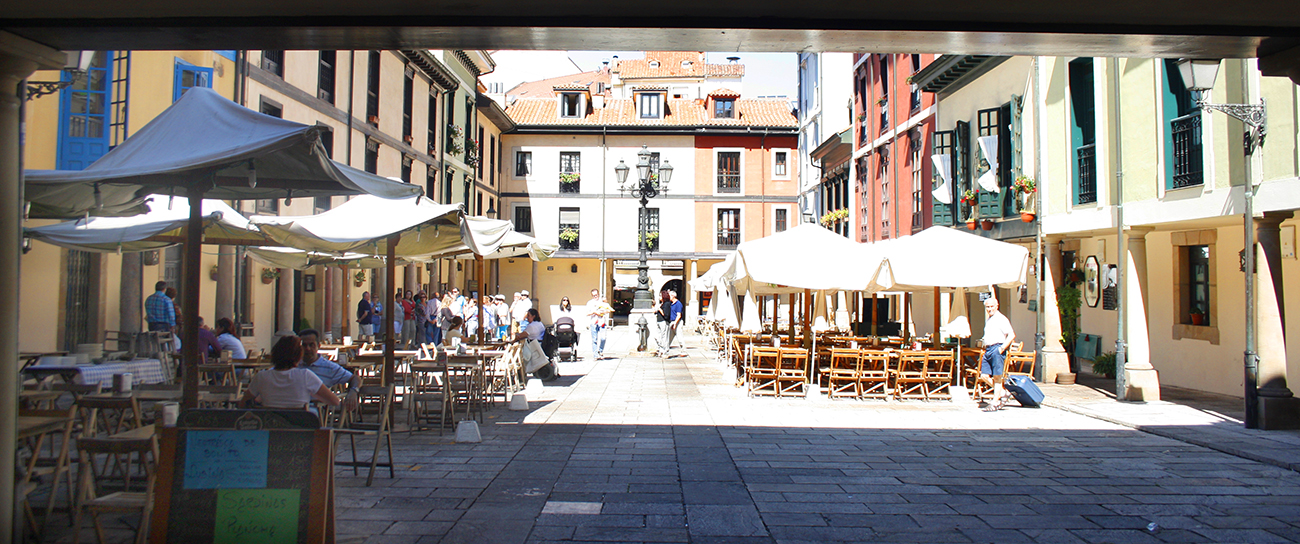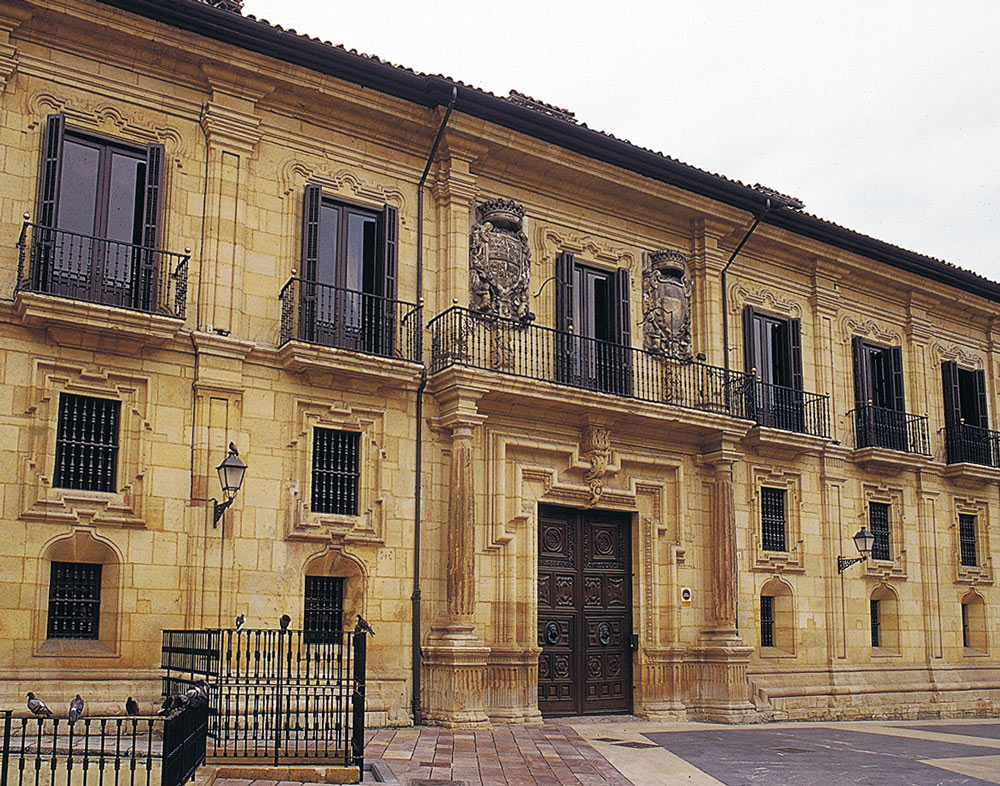NOON: SQUARE AND MARKETPLACE
NOON: SQUARE AND MARKETPLACE
From the Town Hall Square, take the street nearest the corner of San Isidoro and you will come to El Fontán, perhaps the most popular part of Oviedo and where the market is held on Thursdays and Saturdays, as well as Sundays when there is also a flea market.
The building next to the Church is the produce market where meat, fish, cheese, pickles, greens, fruit as well as typical and traditional gastronomic products are sold These stalls provide the ingredients for the best cuisine in Asturias. The building occupies Octubre 19 Square and is a good example of cast-iron architecture. Designed by Javier Aguirre, it opened in 1885.
Directly opposite is a small, arcaded square known as El Fontán, the reconstruction of a building erected on a dried lagoon in an area where villagers and craftsmen have always gathered to sell their products. The original square, from 1792 and designed by Francisco Pruneda y Cañal, created a small rectangular space with arches on the outside and small divisions on the inside for shops while the first floor was dedicated to warehouses, which were soon transformed into homes.

The “hunchback” houses
The Fontán also has its literary references. In his novel, Tigre Juan (1926), Ramón Pérez de Ayala includes this description: “a knot of hunchbacked, outdated, senile houses. Now that they are past their prime, they seek support on the porch columns. The square is like a gathering of old cripples, propped up on their crutches and forming a huddle to gossip.”
The El Fontán Square leads to another site of great interest, Daoíz y Velarde Square which is presided over by the Palace of the Marquis of San Feliz, the largest and most representative baroque palace in Oviedo and the only one in northern Spain that is both private and inhabited. Built between 1725-1730 for the Dukes of Parque based on a project by Francisco de la Riva Ladrón de Guevara, the beauty of the main façade – sandstone ashlar, flared windows, mouldings, bolstered pillars, Tuscan columns…- could be a display of the wealth with which it was built, originating from the kingdoms of Sardinia, Naples and Sicily. The family of the Marquis of San Feliz, the current owner, restored it, lives here occasionally, and keeps it in perfect condition as a private palace-museum. Visits are not allowed.
Until it was concentrated into the covered square, this area was a fruit and vegetable market with stalls boasting white Venetian awnings mixed with the humbler stalls of the local producers of Faro pottery and seasonal vegetables. A sculpture reminds us of the former, while the “muyerinas” (countrywomen) have returned with their “open-air stalls”, now alongside others selling organic produce and seedlings.
Next to Marques de San Feliz Palace, in the square that fills with children playing ball in the afternoons, is the Pérez de Ayala Public Library of Asturias. Opposite that corner is the Arco de los Zapatos (Arch of the Shoes), so called because here the traditional madreñas (peasant shoes made of wood similar to the clogs) were sold; today, this area is known as the Boulevard of Flowers, as all the stalls now sell flowers.
This is an excellent place to buy typical Asturian gastronomic products so that, when you return home, you can continue to remember your trip to Oviedo.
The Fountain that “heals” Pride
At the corner of Daoíz and Velarde Square, at the bottom, next to the Palace coach house, there is a small drinking fountain just below ground level, covered by a grate, that goes almost unnoticed. It was built in 1657. The fountain “heals” pride as explained in these verses by Luis Tapia:
“Fountain that lies so low/
that makes the tallest/
bend his spine/
when leaning to drink./
And so humble exercise/
removed, in truth/
from many people the vice/
of their haughty vanity./
In Oviedo, when someone,/
given their importance or honour/
presumed, inappropriately,/
of ill-founded pride/
the people would/
say of such a rogue/
we must take him to drink/
from the pipe of El Fontán.”
Although the fountain really has two pipes

